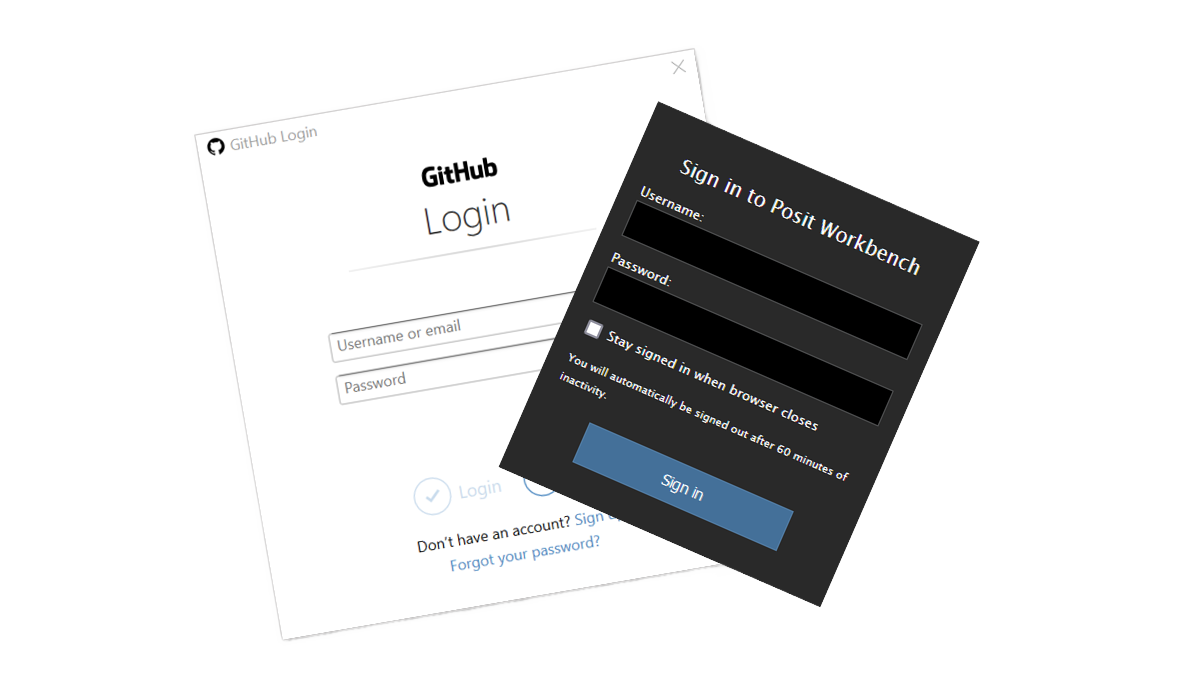Connecting Posit Workbench (RStudio) to GitHub with HTTPS
If you're an RStudio user using Posit Workbench and want to use GitHub for source control (you should), this is the guide for you. There are two ways...

Many companies investing in data analytics struggle to achieve the full value of their investment, perhaps even becoming disillusioned. To understand why and how to avoid this, realise first that value in business stems from identifying opportunities and taking good decisions.
The most successful companies use data and analysis to generate insight and make smarter, better-informed decisions which boost the bottom line. To mirror that success requires a common set of building blocks: the right data, tools and skills. It also requires a clear focus. Pick the right problems and adopt a project approach to tacking them.
In this article:
Value in business stems from identifying opportunities and taking good decisions. In business, as in life, there are countless decisions we could take every day but only a limited number we can take. To spot an opportunity is to identify a decision worth making. And making the right decision on a worthwhile opportunity can be the difference between success and failure.
We use data to spot opportunities. Modern business systems record an untold number of little facts every day. An order placed. An employee clocked in. A customer pressing the frowny-face button on their way out the door. These facts accumulate like grains of sand, forming patterns which reveal the otherwise unseen forces. The eddies and tides which shape our business.
By collecting data and noting these patterns, we gain insights and identify opportunities. A list of sales is just data. But if we tally by day, we see weekly patterns. Are Monday mornings always busy? Is this an opportunity? What can we do to exploit this?
But data on its own is not enough. We also need the right tools and skills.
There are three basic tools we need. A database to store and organise our data. A business intelligence tool to serves up information to decision-makers – as a chart, a table, an interactive dashboard – with minimum effort. And finally, analytical programming tools, like Python or R, which let data analysts do the job they were hired for.
The tools are necessary but they are not enough. We need people with the skills to use them to spot the patterns, communicate the insights and provide the guidance that the data affords. Data analysts.
Of the three – data, tools and skills – having people with the right skills is by far the most important. An expert data analyst with a blank piece of paper and a pen will make more impact on our business than the shiniest piece of enterprise software that no one knows how to use.
Companies commonly fail to direct their analytical teams’ work, wasting the investment. The curse of hiring a talented, willing analyst is that they are useful for a lot of things, not just the things we hired them for. They answer a quick question for one manager and before you know it, their days are filled with a random collection of favours and queries for basic information.
Having analysts drawn into fulfilling these simple requests incurs a significant cost. These are expensive people (there are cheaper ways to fulfil simple requests). Analysts should be focused on strategic challenges – informing high-value decisions – enabling managers to make quicker and smarter decisions.
Basic information reporting should be largely automated. That’s what business intelligence tools are for. Put routine information directly at the fingertips of those who need it and save analysts’ time for knottier questions. Want to know the sales trend over the last year? No need to request and wait, just use the live sales dashboard to see for yourself.
If we have managed to protect analysts’ time, our next challenge is to ensure efforts are directed at the most worthy problems. A proportion of analysts’ time should be dedicated to identifying which problems are worthiest. The largest companies – including airlines, supermarkets, banks and travel firms – will even create separate “data insight” teams for this sole purpose.
With worthy problems identified, these should be tackled as projects: chunks of work with clear goals, deadlines and budgets. Doing so allows work to be prioritised, completed and for success to be evaluated. Without a project focus, analysts will gravitate to work they find most interesting, not always the most valuable.
What does this look like when done well? A report in the MIT Sloan Management Review describes how Regions Bank, a $6.8 billion US company based in Alabama, organises and directs its analytical resources to maximum effect.
The bank’s chief data and analytics officer, arriving in 2018, realised that the fruits of their data scientists’ labour were often just not being used. To fix this, he had the team adopt a “product-oriented” approach. By focusing their analytical efforts into developing and deploying carefully chosen “data products”, they achieved a 100% uptake. Every data “product” they delivered was used by the business, contributing millions to the bank’s bottom line in cost savings and additional income.
Region Bank’s example demonstrates the rewards possible when a team with the right skills focus on the right problems. Of course, they wouldn’t have got far without the right data or the tools either.
If you want to replicate the success:
Few companies manage to get all these ingredients in place. But if you get a taste for data analytics done right, you won’t want to go back to making decisions on scraps.
Not sure how to apply these lessons in your business? Why not request a free data review?

If you're an RStudio user using Posit Workbench and want to use GitHub for source control (you should), this is the guide for you. There are two ways...

Many companies investing in data analytics struggle to achieve the full value of their investment, perhaps even becoming disillusioned. To understand...

We are cursed to live in interesting times. As I write this, a war in Ukraine rumbles on, we sit on the tail of a pandemic and at the jaws of a...